|
1950's the United States began to send troops to Vietnam
|
In the 1950's the United States began to send troops to Vietnam. During the following 25-years the ensuing war would create some of the strongest tensions in US history. Almost 3 million US men and women were sent thousands of miles to fight for what was a questionable cause. In total, it is estimated that over 2,5 million people on both sides were killed.
This site does not try to document the entire history of the Vietnam War, but is intended as a picture essay illustrating some of the incredible conditions under which soldiers from both sides lived, fought, played and ultimately died. The legendary combat photographer, Tim Page, took almost all of the images shown on this site and they are nothing short of stunning.
Please be advised that strict copyright laws protect this site and under no circumstances may any images be copied or used. Copyright use of the images are handled by Corbis. Please see the acknowledgment section for more details about the pictures and this site. And finally, NO!, I cannot give anyone permission to use the images, they are the property of the photographers or their publishers.
Finally, if you have come here to ONLY look at blood and gore you have come to the wrong place, a soldiers facial expression can be just as terrifying
|
For much of Vietnam's history it has been under foreign rule, primarily by the Chinese. In 1860, France began its domination of the area and had, by the late 19th century, implemented its colonization in a number of regions around the Gulf of Tonkin. During WWII, the Japanese government took control of much of the area and set up a puppet regime that was eventually forced out by the Vietnamese at the end of that war in 1945.
After WWII and until 1955, France fought hard to regain their former territories in the region, but with a poorly organized army and little determination among the troops, their efforts soon collapsed. The French were finally defeated at Dien Bien Phu on the 8th of May 1954 by the communist general Vo Nguyen Giap. The French troops withdrew, leaving a buffer zone separating the North and South and set up elections in order to form a government in the South. The communist regime set up its headquarters in Hanoi under the leadership of Ho Chi Minh. Many North Vietnamese left the country and fled south where the self-proclaimed president, Ngo Dinh Diem had formed the Republic of Vietnam.
Between 1955 and 1960, the North Vietnamese with the assistance of the southern communist Vietcong, tried to take over the government in South Vietnam, and in November 1963 President Diem was overthrown and executed. The following year, the North Vietnamese began a massive drive to conquer the whole country aided by China and Russia.
Fearing a communist takeover of the entire region, the United States grew more and more wary of the progress of Ho Chi Minh and the Vietcong. Communism had become the evil menace in the United States and with expansion of Soviet rule into Eastern Europe, Korea and Cuba, the Americans were bent on stopping communism from spreading any further.
| |
With the cold war at its height, the US leaders were worried that an attack on North Vietnam by the US would create tensions with the Chinese and Russians that would, in turn, lead to a larger conflict and possibly WW III. This created a difficult situation for the US and would eventually lead to many internal conflicts, which ultimately prevented the US from forming a firm policy for the region. The US was also faced with a number of cultural differences between the two countries, and what was considered corrupt by the US government was considered legitimate by South Vietnamese standards. It was difficult for the US to portray South Vietnam as a hard working, hard fighting democracy; corruption was widespread among officials and the armed forces. The Army of the Republic of Vietnam (ARVN) was disorganized due to the low morale of it's leaders and their singular interest in personal gain. Therefore the US had a great deal of difficulty in holding the army together in South Vietnam and saw only one solution, that was to start taking care of things for themselves. By 1950 the US began sending their first troops, firstly in an advisory role, which slowly escalated into a full blown commitment.
The large-scale involvement of the US came under the tenure of President Lyndon B. Johnson and his Gulf of Tonkin Resolution. Johnson had replaced John F. Kennedy after he was assassinated in Dallas, Texas 1963. As president, he was torn between the differing strategies the US had for Vietnam. The increasing involvement and the escalation of troop involvement meant there were more casualties and more problems at home. But Johnson, who was always concerned about his image, and as president, held the power to halt the war in Vietnam, could not face the thought of being regarded as the first president in US history to loose a war.
The pressure around him grew so intense, that he was only left with one option and that was not to run for a second term. Basically, he handed the hot potato to Richard M. Nixon
|
The top US commander in Vietnam was General William Westmoreland; he had to face an army full of young men placed in an environment that was totally alien to them. There was no clear front to the conflict and basically, the enemy could be hiding anywhere and everywhere. Life in the jungle was tortuous and there were no home comforts. Drugs and other stimulants filtered their way into the daily routine of many servicemen and morale quickly started to fall. For the first time, people in the US resisting the draft were given acceptance although still not by the majority of citizens. Riots and demonstrations against the war became the norm in the US, with numerous veterans taking part in the efforts to stop the war, strengthening the issue. Finally, the US government saw that it was in a no-win situation and began making plans to withdraw.
After great efforts by the US to withdraw, and the establishment of a cease-fire on January 27th, 1973, American soldiers began leaving Vietnam for good. The North Vietnamese finally conquered South Vietnam in early 1975, totally ignoring the cease-fire and on July 2nd, 1976, North and South Vietnam were officially united as a single communist state. It had cost an estimated 2 million lives and the injury or disablement of many millions of others.
|
| |
Vietnamese children flee from their homes in Trang Bang June 8th, 1972. A South Vietnamese air force plane has accidentally dropped a napalm bomb on the village 26 miles outside of Saigon. This is without a doubt one of the most remembered images of the war. Twenty-five years later, the young girl running naked from her village, Phan Thi Kim Phuc, was named a UNESCO goodwill ambassador.
|
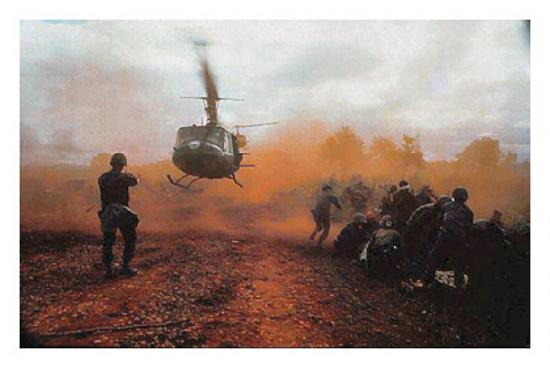 |
| A US helicopter takes off from a clearing near Duc Co fire support camp, wounded soldiers crouch down in the dust of the departing helicopter. The military convoy was on its way to relieve the camp when it was ambushed. The camps were set up in the Central Highlands to protect roads and detect Vietcong movements. The Vietcong would attack the bases to try and lure US troops to be moved in as support and then ambush them on their way to the camps. |
|
|
| |
Helmets, rifles and jungle boots tell a grim tale of the action fought by the 1st Brigade, 101st airborne paratroopers in Operation Wheeler near Chu Lai. This battlefield memorial honors the soldiers killed during the offensive between September 11th and November 25th, 1967.
|
The Wall" , a powerful tribute to the American people who died in the war with all of their names engraved on it. It was dedicated on Veterans Day, November 13th, 1982. On Veterans Day in 1993, sculptor Glenna Goodacre's bronze statue of three women nurses helping a wounded US soldier was unveiled, thus honoring the 11500 US women who also served in Vietnam. Although the US has found some reconciliation, many veteran organizations still continue to campaign for veteran help programs. View our link page for some of these organizations.
|
| |
The parade of Vietnam veterans down Broadway in Manhattan, 1985; 10 years after the war the American soldiers were finally welcomed home.
After their return from Vietnam, many veterans in the US were treated with disrespect. There were few adjustment and help programs available and the public was divided in its opinion. American veterans received only partial benefits in comparison to earlier campaign veterans, Vietnam veterans were also stereotyped as drug addicts, violence seekers etc. As general interest about the war grew due to the media attention and Hollywood movies such as Platoon and Full Metal Jacket, efforts at correcting some of the problems have been made. Belated parades and memorials have sought to patch up some of the ill feeling, but many US veterans still feel that there are many areas that still need improvement.
|
What is a Vet?
Some veterans bear visible signs of their service: a missing limb, a jagged scar, a certain look in the eye.
Others may carry the evidence inside them: a pin holding a bone together, a piece of shrapnel in the leg - or perhaps another sort of inner steel: the soul's ally forged in the refinery of adversity.
Except in parades, however, the men and women who have kept America safe wear no badge or emblem. You can't tell a vet just by looking.
What is a vet?
He is the cop on the beat who spent six months in Saudi Arabia sweating two gallons a day making sure the armored personnel carriers didn't run out of fuel.
He is the barroom loudmouth, dumber than five wooden planks, whose overgrown frat-boy behavior is outweighed a hundred times in the cosmic scales by four hours of exquisite bravery near the 38th parallel.
She - or he - is the nurse who fought against futility and went to sleep sobbing every night for two solid years in Da Nang.
He is the POW who went away one person and came back another -or- didn't come back AT ALL.
He is the Quantico drill instructor that has never seen combat - but has saved countless lives by turning slouchy, no-account rednecks and gang members into Marines, and teaching them to watch each other's backs.
He is the parade - riding Legionnaire who pins on his ribbons and medals with a prosthetic hand.
He is the career quartermaster who watches the ribbons and medals pass him by.
He is the three anonymous heroes in The Tomb Of The Unknowns, whose presence at the Arlington National Cemetery must forever preserve the memory of all the anonymous heroes whose valor dies unrecognized with them on the battlefield or in the ocean's sunless deep.
He is the old guy bagging groceries at the supermarket - palsied now and aggravatingly slow - who helped liberate a Nazi death camp and who wishes all day long that his wife were still alive to hold him when the nightmares come.
He is an ordinary and yet an extraordinary human being, a person who offered some of his life's most vital years in the service of his country, and who sacrificed his ambitions so others would not have to sacrifice theirs.
He is a soldier and a savior and a sword against the darkness, and he is nothing more than the finest, greatest testimony on behalf of the finest, greatest nation ever known.
So remember, each time you see someone who has served our country, just lean over and say Thank You. That's all most people need, and in most cases it will mean more than any medals they could have been awarded or were awarded.
Two little words that mean a lot, "THANK YOU".
Remember, November 11th is Veterans Day.
One fine man probably summarized it best...
"It is the soldier, not the reporter, Who has given us freedom of the press. It is the soldier, not the poet, Who has given us freedom of speech. It is the soldier, not the campus organizer, Who has given us the freedom to demonstrate. It is the soldier, Who salutes the flag, Who serves beneath the flag, and whose coffin is draped by the flag, Who allows the protester to burn the flag."
Father Denis Edward O'Brien, USMC
|
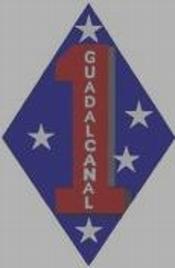 |
| 1st Marine Division Website. |
|
|
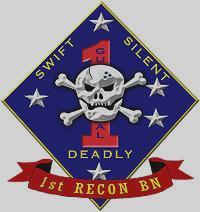 |
| 1st Reconnaissance Battalion Website |
|
|
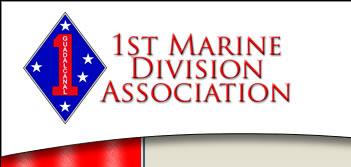 |
| Click for Website |
|
|
1st Reconnaissance Battalion Association Website
Click Here
|
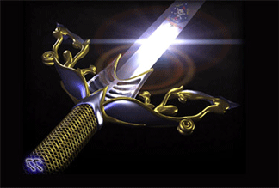 |
| Click for Index page |
|
|
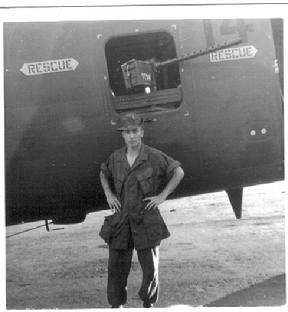 |
| Thanks for Stopping By |
|
|
 |
| Click for Home page 1st Recon Bn.com |
|
|
Categories within this 1st Reconnaissance Battalion website.
1st Recon Bn.com Home page, My Missions in Nam (Coming soon), Photos of 1st Recon Battalion in Nam, Recon Missions the units Patrol Reports 1968-1969 (coming soon), A Summer Day in Nam - My Story (Coming soon), Recon 1 The War, Recon 2 Tet Offensive in Nam 1968, Tet Offensive in Nam 1969 (Coming soon), Recon 3 Vietnam War Timeline, Recon 4 President Richard M. Nixon's Report on Vietnam, Recon 5 1950's US send troops to Vietnam, Recon 6 The French Foreign Legion in Vietnam, Recon 7 Hill 200 my story with photos (Coming soon), Recon 8 - Maps & Artifacts - The Time Capsule (Coming soon), Recon 9 1st Recon Battalion Units photos, Recon 10 Sounds from Nam (Coming soon), Recon 11 Reunion Photos, Recon 12 Helicopters in Nam, Recon 13 1st Recon Bn. Awards & Decorations, Recon 14 Navy & Marine Corps Awards and Decorations, Recon 15 Marine Corps Awards & Decorations, Recon 16 Personal Awards & Decorations, Recon 17 Information on Unit Awards, Recon 18 The Memory Remains Not All Wounds Are Visible, Recon 19 Purple Heart (Coming soon) & Recon 20 Vietnam Footage & Memorials, Vietnam Memorials & Monuments part 2 No Man Left Behind part 1, No Man Left Behind part 2, No Man Left Behind part 3 (Coming soon) ,1st Recon Bn.com Photo Gallery , 1st Recon Bn. Association Messages, 1st Marine Division Association Messages, Battles of the Vietnam War, Hamburger Hill, Vietnam 1968, Vietnam 1969, Vietnam Today, The Day The Eagle Cried, My Message Board.
|
|
|
Index
Categories within 1st Recon Bn
Click the index for the Index page. |
| |
 |
| Email me with your feedback on how I can Improve this website. |
|
|
|